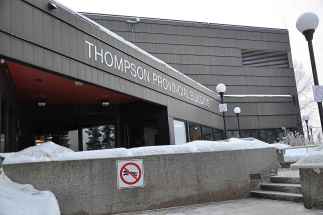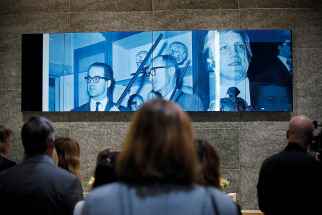Report does little to advance downtown safety
Read this article for free:
or
Already have an account? Log in here »
To continue reading, please subscribe:
Monthly Digital Subscription
$0 for the first 4 weeks*
- Enjoy unlimited reading on winnipegfreepress.com
- Read the E-Edition, our digital replica newspaper
- Access News Break, our award-winning app
- Play interactive puzzles
*No charge for 4 weeks then price increases to the regular rate of $19.00 plus GST every four weeks. Offer available to new and qualified returning subscribers only. Cancel any time.
Monthly Digital Subscription
$4.75/week*
- Enjoy unlimited reading on winnipegfreepress.com
- Read the E-Edition, our digital replica newspaper
- Access News Break, our award-winning app
- Play interactive puzzles
*Billed as $19 plus GST every four weeks. Cancel any time.
To continue reading, please subscribe:
Add Free Press access to your Brandon Sun subscription for only an additional
$1 for the first 4 weeks*
*Your next subscription payment will increase by $1.00 and you will be charged $16.99 plus GST for four weeks. After four weeks, your payment will increase to $23.99 plus GST every four weeks.
Read unlimited articles for free today:
or
Already have an account? Log in here »
Hey there, time traveller!
This article was published 12/12/2019 (2192 days ago), so information in it may no longer be current.
There isn’t much value in a report issued last week by the Manitoba Police Commission on how to improve downtown safety.
The 46-page report, commissioned by the Pallister government earlier this year, attempts to delve into the complex subject of what makes people feel unsafe in the city’s core area. The examination was intended to help find solutions to downtown safety issues, or at least identify gaps within existing programs and policies that could be addressed.
More patrols, less panhandling among 27 downtown-safety recommendations

Posted:
Better co-ordination of foot patrols, improved use of closed-circuit surveillance cameras and stronger enforcement of panhandling laws are among the recommendations of a report detailing ways to enhance downtown safety in Winnipeg.
There are, however, few ideas or observations in the report that have not been heard before. The document amounts mostly to an inventory of programs the city, police, downtown BIZ groups and others already administer. It also contains feedback from public consultations that generated a wide range of views.
What the report concludes is that improving downtown safety is less of a policing issue and more of a social and economic one.
More needs to be done to address the root causes of downtown crime, the report states. Better supports are needed to alleviate poverty and homelessness.
Those observations are thoughtful and accurate, but they add nothing new to the discussion. It’s widely accepted that far more needs to be done to address the socio-economic challenges identified in the report. The difficulty is figuring out how to do that more effectively, and the authors of the report offer little insight into how to achieve that goal.
What they found is that myriad government and non-government agencies already provide a wide range of social and economic supports in the core area.
They say those services need to be better co-ordinated, and that a more comprehensive plan is needed.
But the authors also acknowledge the City of Winnipeg has already hired a consulting firm to review those services as part of developing a new, comprehensive community safety plan.
The police commission report was never meant to be a roadmap on how to improve downtown safety. Rather, it was an attempt to take a broad view of what individual agencies are doing to improve downtown safety, and how public perceptions of the downtown are shaped.

It offers 27 proposals on what governments and non-government agencies might consider to help improve downtown safety.
Some of those proposals are vague, such as taking undisclosed measures to crack down on panhandlers who disrupt traffic along major roadways. Others are misguided, including a proposal to force treatment on lawbreakers with addiction problems who have refused treatment in the past.
Some have merit, including a proposal for a public education campaign to help inform people about the root causes of crime (while also providing advice on how to stay safe). A proposal to better co-ordinate foot patrols in the core area might be useful.
In the end, this report isn’t terribly enlightening.
However, most of the findings and recommendations in the report add very little to the large body of information that already exists on how to improve downtown safety; or more broadly, how to create healthier, more economically equitable communities.
In the end, this report isn’t terribly enlightening. One might argue it’s more about a provincial government trying to appear as though it’s doing something to improve safety in downtown Winnipeg.
There are times when government-commissioned reports produce good ideas and unique proposals that can translate into effective public policy. This isn’t one of them.










